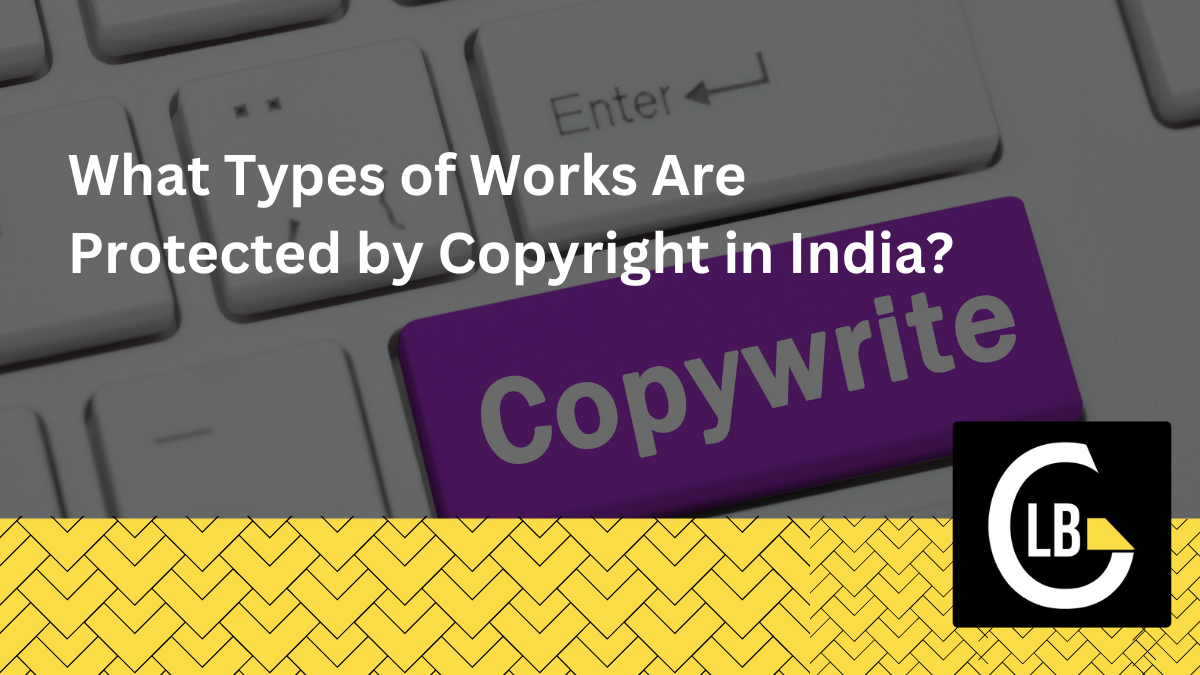When you create something unique—whether it’s a painting, a song, a blog post, or even a movie—copyright is what safeguards your work. Copyright protection ensures that no one else can use, copy, or distribute your creation without your permission. In India, the Copyright Act of 1957 spells out which types of creative works are covered. Let’s break down the different types of works that get protection under this law in simple terms.
1. Literary Works
When it comes to literary works, it’s not just books that get protection. Any original writing is included under this category. Examples include:
- Stories, novels, and poems
- Blog posts and articles
- Research papers
- Even computer programs or software code
As soon as you put your original thoughts into words, whether typed or written, copyright kicks in and your work is protected.
2. Dramatic Works
Dramatic works refer to anything created to be performed. This could be:
- Plays
- Screenplays or scripts
- Dance choreography
Copyright protects not only the written parts of a dramatic work but also how the performance is organized. So, if you write a play or come up with a dance routine, it’s protected.
3. Musical Works
When you compose a piece of music, that composition—whether it’s just notes or a fully written-out score—is considered a musical work. However, this protection applies only to the music itself, not the lyrics or any recordings of the song.
If you compose a melody or create any kind of original music, copyright ensures no one can perform or reproduce it without your permission.
4. Artistic Works
This covers all visual art forms, like:
- Paintings and drawings
- Sculptures
- Photographs
- Architectural designs (like building blueprints)
Anything that’s an original visual creation falls under artistic works. Even simple drawings or technical diagrams are protected as long as they involve your original expression.
5. Cinematographic Films
This refers to movies, documentaries, web series, or any kind of video content. A cinematographic film is any visual recording with or without sound, whether on film or in digital form.
If you produce or create a film, copyright law gives you control over how and where it’s distributed or shown. It also separately protects the visuals and audio of the film.
6. Sound Recordings
Sound recordings refer to the actual recorded audio of music, podcasts, audiobooks, or any other sound file. This is different from the composition of the music itself. For example, if you record a cover of a song, the recording belongs to you, but the original song composition remains under someone else’s copyright.
In short, the recorded version of any sound is protected, even if it’s based on someone else’s work.
7. Broadcasts and Performances
Live broadcasts, whether on TV, radio, or online, are also covered under copyright in India. Whether it’s a live radio show or a television broadcast, the owner of the broadcast gets exclusive rights to control its use and distribution.
Similarly, performers like actors, singers, and dancers have their performances protected. If you’re performing live, no one can record or share your performance without your consent.
Important Things to Remember:
- Automatic Protection: You don’t need to register your work for it to be protected in India. Copyright starts as soon as the work is created. However, registering your work can help you prove ownership in case of disputes.
- Duration of Copyright: Generally, copyright lasts for the creator’s lifetime plus 60 years. After that, the work enters the public domain.
- Fair Use: Certain uses of copyrighted works, such as for research, education, or reviews, are allowed under the “fair use” rule. This means others can use small portions of your work without permission in specific cases.
Conclusion
In India, copyright protects a wide range of creative works—from books and songs to paintings and films. Whether you’re a writer, artist, musician, or filmmaker, knowing your rights helps you control how your work is shared and prevents others from using it without your consent.
By understanding what’s protected under copyright law, you can make sure your hard work and creativity stay safe and in your control.
